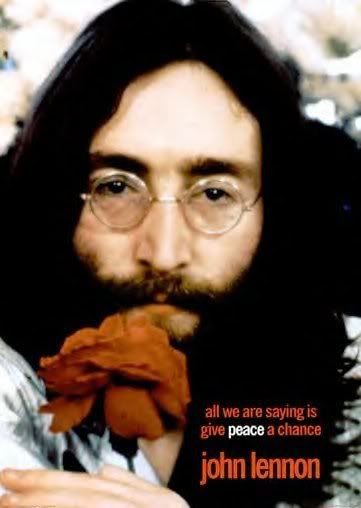“Imagine” by John Lennon and “Blowin’ in the Wind” by Bob Dylan are two very influential songs that may be compared and contrasted in terms of statistical facts, lyrical meaning and relevance to their times in history. Both Lennon and Dylan use their words and music in these two songs to compel the listener to strive for world peace.
Lennon wrote the song “Imagine” in less than two hours and recorded it in only two attempts. Yet this song is one of the best known and most loved songs of Lennon’s career. It first appeared in 1971 on the album Imagine and became available as a single recording later that same year. The single climbed to number three on the U.S. Billboard charts and rose to number six in the United Kingdom. According to the November 2004 issue of Rolling Stone magazine, “Imagine” ranks third in “The 500 Greatest Songs of All Time.” Furthermore, Amnesty International, the worldwide advocate for human rights, adopted “Imagine” as its theme song.
The lyrics and form are simple and reflect Lennon’s very public thoughts and feelings about world peace. Lennon uses gentle persuasion in his lyrics, suggesting that world peace is achievable once it is conceivable. In the refrain, which includes the most memorable and profound lines in the song, Lennon states his position and puts the responsibility of achieving peace on each listener: “You may say I’m a dreamer, but I’m not the only one. I hope someday you’ll join us, and the world will live as one.”
“Imagine” is relevant to America’s past as well as the present. This song became a hit at a time when world peace was an ideal far from reality. America was embroiled in the unpopular Vietnam War halfway around the world although it invaded our homes with graphic images of violence every day by way of the evening news. “Imagine” was a vessel in which the listener could escape the harsh reality of the war and imagine a world of peace and tranquility.
On the other hand, Dylan wrote the song “Blowin’ in the Wind” in about ten minutes. Dylan performed “Blowin’ in the Wind” publicly for the first time and made his first recording of the song in 1962. One month after the first recording, Dylan added what is now the middle verse and recorded the second version. The second version of “Blowin’ in the Wind” is highly regarded as a classic contribution to the music of the 60’s era. Peter, Paul and Mary also recorded and released “Blowin’ in the Wind” in 1963, selling over three hundred thousand copies in the first week. In 1999, “Blowin’ in the Wind” received the honor of induction into the Grammy Hall of Fame. Additionally in 1999, National Public Radio included “Blowin’ in the Wind” in its list of the one hundred most important American musical works of the twentieth century. In 2004, “Blowin’ in the Wind” ranked fourteenth in Rolling Stone magazine’s list of “The 500 Greatest Songs of All Time.” “Blowin’ in the Wind” remains one of the most popular and influential songs of the 1960’s.
The lyrics are very ambiguous and metaphorical. Dylan is essentially asking the listener two questions: How long will it take and what will it take to end violence and wars? Instead of answering the questions that he poses, he ends each verse and the song with the haunting lines, “The answer, my friend, is blowin’ in the wind; the answer is blowin’ in the wind.”
The relevance of “Blowin’ in the Wind” during the Civil Rights Movement and the cold war era is unmistakable. “Blowin’ in the Wind” came at a time when racial violence was taking America like a wild fire out of control; furthermore, the threat of nuclear annihilation was on everyone’s mind. The assassinations of Martin Luther King, John F. Kennedy and Robert Kennedy played repeatedly in our living rooms on the 6 o’clock news. This was a time of uncertainty and fear, and it was a time when everyone had questions without answers. Dylan asked the questions as a poet, and he left the answers “Blowin’ in the Wind.”
In conclusion, Lennon and Dylan each have their own unique style and voice. Lennon and Dylan each have won numerous awards and honors as singers and songwriters beyond the songs “Imagine” and “Blowin’ in the Wind”. Both “Imagine” and “Blowin’ in the Wind” are highly acclaimed as masterful works of music, and each still receives playtime on the radio, television and internet. Each song has won various awards and honors. Each song has maintained its well-deserved acclaim for over thirty years.
Ironically, the sad note is that Lennon, who dedicated most of his life to promoting peace and compelling people to find the answer to the question of how to attain world peace, died of multiple gunshot wounds to the back just outside his home in New York City on December 8, 1980.
The answer, my friend, is still blowin’ in the wind; the answer is still blowin’ in the wind.

October 9, 1940 - December 8, 1980
I think it is very telling that both me wrote those particular songs in less than ten minutes. It just goes to show that if you speak, write, or sing from the heart that the message will come through. Very nice DRiddles.
ReplyDelete